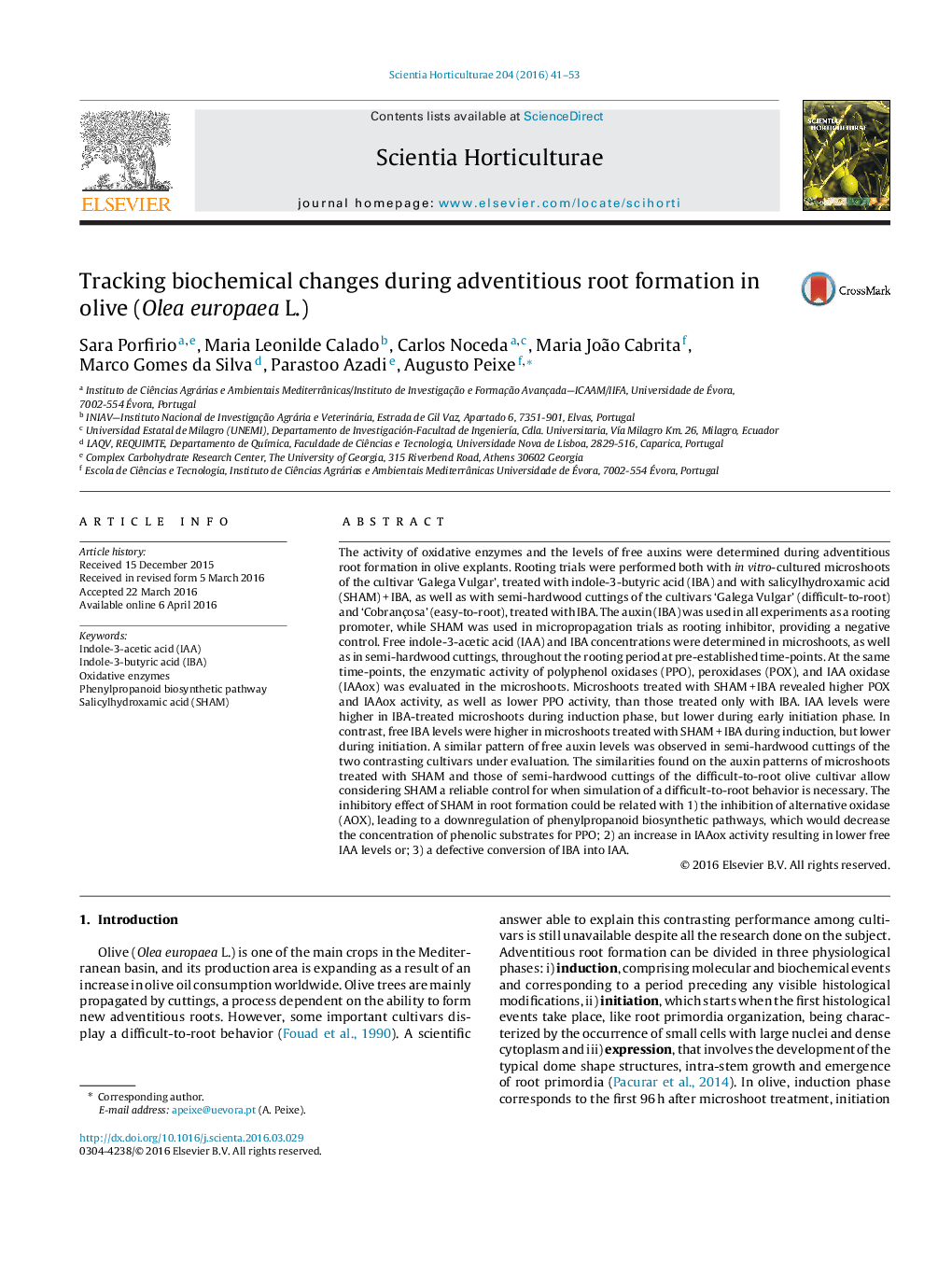| Article ID | Journal | Published Year | Pages | File Type |
|---|---|---|---|---|
| 4566086 | Scientia Horticulturae | 2016 | 13 Pages |
•Rooting ability is likely related with IBA-IAA conversion and oxidative enzymes activity.•Olive microcuttings and semi-hardwood cuttings present similar rooting behavior.•Molecular pathways potentially involved in olive adventitious rooting are described.•The potential involvement of AOX genes in rooting is exploited.•SHAM may be a good choice to obtain negative controls in rooting assays.
The activity of oxidative enzymes and the levels of free auxins were determined during adventitious root formation in olive explants. Rooting trials were performed both with in vitro-cultured microshoots of the cultivar ‘Galega Vulgar’, treated with indole-3-butyric acid (IBA) and with salicylhydroxamic acid (SHAM) + IBA, as well as with semi-hardwood cuttings of the cultivars ‘Galega Vulgar’ (difficult-to-root) and ‘Cobrançosa’ (easy-to-root), treated with IBA. The auxin (IBA) was used in all experiments as a rooting promoter, while SHAM was used in micropropagation trials as rooting inhibitor, providing a negative control. Free indole-3-acetic acid (IAA) and IBA concentrations were determined in microshoots, as well as in semi-hardwood cuttings, throughout the rooting period at pre-established time-points. At the same time-points, the enzymatic activity of polyphenol oxidases (PPO), peroxidases (POX), and IAA oxidase (IAAox) was evaluated in the microshoots. Microshoots treated with SHAM + IBA revealed higher POX and IAAox activity, as well as lower PPO activity, than those treated only with IBA. IAA levels were higher in IBA-treated microshoots during induction phase, but lower during early initiation phase. In contrast, free IBA levels were higher in microshoots treated with SHAM + IBA during induction, but lower during initiation. A similar pattern of free auxin levels was observed in semi-hardwood cuttings of the two contrasting cultivars under evaluation. The similarities found on the auxin patterns of microshoots treated with SHAM and those of semi-hardwood cuttings of the difficult-to-root olive cultivar allow considering SHAM a reliable control for when simulation of a difficult-to-root behavior is necessary. The inhibitory effect of SHAM in root formation could be related with 1) the inhibition of alternative oxidase (AOX), leading to a downregulation of phenylpropanoid biosynthetic pathways, which would decrease the concentration of phenolic substrates for PPO; 2) an increase in IAAox activity resulting in lower free IAA levels or; 3) a defective conversion of IBA into IAA.
Graphical abstractFigure optionsDownload full-size imageDownload as PowerPoint slide
